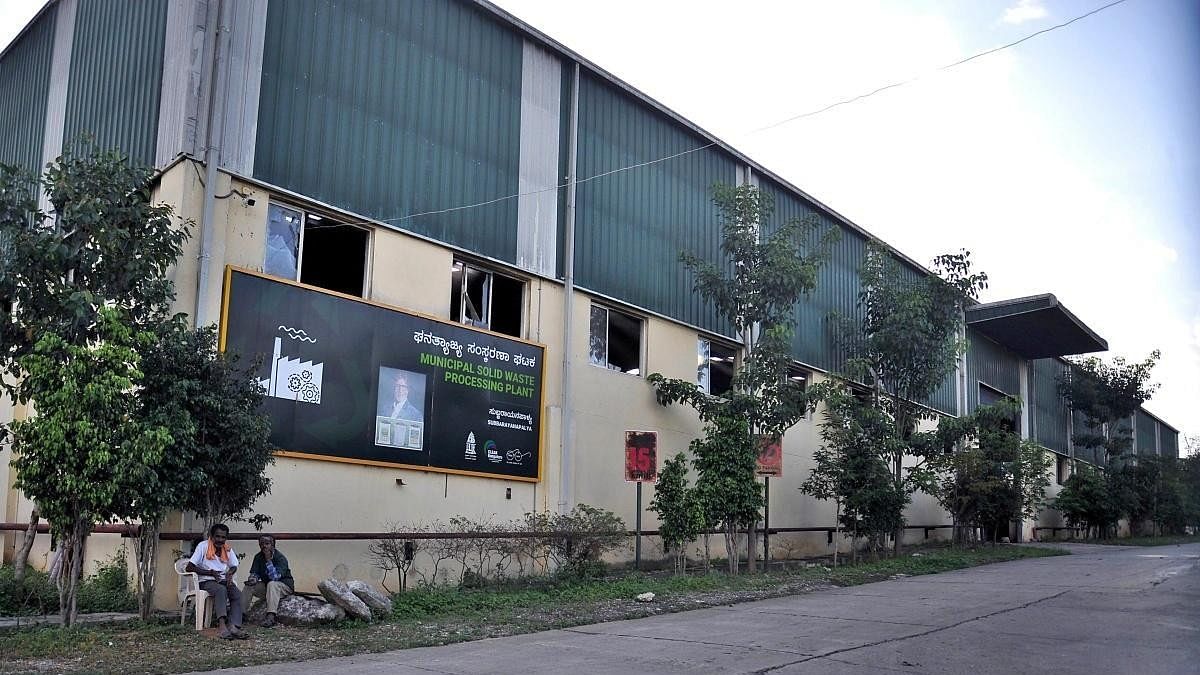
A view of BBMP’s solid waste processing plant at Subbarayanapalya, Bengaluru.
Credit: DH Photo
Bengaluru: Poor management of solid waste (MSW) not only affects the neighbourhoods but is also adding to Bengaluru's pollution load as unscientific processing of the waste has led to high emission of particulate matters PM 2.5 and PM 10.
Prof Gufran Beig from the National Institute of Advanced Studies and a team of researchers studied three MSW plants in Bingipura, Mavallipura and the Karnataka Compost Development Corporation (KCDC) Plant near Kudlu.
"The Bingipura MSW Plant is the largest emitter, releasing 673.37 tonne/year of PM 10 and 628.13 tonne/year of PM 2.5. This facility's operations involve extensive waste processing activities that release large quantities of particulate matter into the atmosphere," the study said.
The KCDC plant, which has been found to be violating the environmental laws time and again, emits 258.99 tonne/year of PM 10 and 240.41 tonne/year of PM 2.5. The plant was taken to high court following which the Karnataka State Pollution Control Board had ordered its closure in 2022.
The MSW Plant that has angered residents of Mavallipura for years, was found to be emitting 89.60 tonne/year of PM10 and 83.20 tonne/year of PM 2.5. The study said the activities at the plant, like other waste processing activities, involved handling and processing large volumes of garbage, leading to elevated levels of particulate matter.
"The landfills are the largest single point source in terms of magnitude of emissions although limited to a few (areas)," the study said.
Poor worst hit by pollution
Prof Beig noted that impact of the pollution should be understood from the local context as areas situated a few blocks away from the polluting sources may not get affected compared to those in the vicinity.
"This is why we need to understand the realities of the slums, where women continue to depend on wood as fuel as they cannot afford LPG. During our field work, we found that a LPG cylinder lasts for a year in some households because it is used only when there are guests at home," he said.
The study found that in densely populated slums 15.2 kg of wood is used per month against 1.5 kg of LPG. In the sparsely populated slums, the monthly wood usage was lower at 5 kg against 3 kg LPG.
Many participants in the stakeholders meeting opined that pollution in the slums, however, should be viewed from the particular economic situation of its residents. At least two officials pointed out that the rising cost of an LPG cylinder has made it unaffordable.